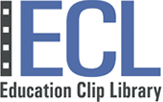How to Implement Technology in Business Education
In today's rapidly evolving educational landscape, the role of technology in business education is more vital than ever before. With the digital transformation of industries worldwide, students need to graduate with not only a strong foundation in business fundamentals but also the technological skills to thrive in the modern workplace. As educators and teachers, it's our responsibility to equip our students with these essential skills.
One valuable resource that can assist educators in enhancing their teaching methods is an outline writing service via https://123helpme.org/articles/make-an-outline-for-me/
These services can provide well-structured outlines for lesson plans, ensuring that the integration of technology in business education aligns with educational objectives and prepares students for success in the business world. By utilizing such services, educators can save time and focus on delivering engaging and effective lessons that truly empower their students for the digital age.
Assessing Technological Needs
Understanding Your Educational Goals
The journey to effective technology integration begins with a clear understanding of your educational goals. What are your objectives for your business education program? Are you aiming to enhance financial literacy, promote entrepreneurship, or foster critical thinking in your students? Identifying these goals is crucial as technology should serve as a means to achieve them.
Assessing Student Proficiency
Every classroom is a diverse mix of students with varying levels of technological proficiency. Some may be digital natives, while others might need more guidance. It's essential to assess your students' technological skills at the beginning of the course. Tailor your teaching approach to accommodate these differences, providing support and resources as needed.
Choosing the Right Tools
Selecting the appropriate technological tools is a critical step. Learning Management Systems (LMS), educational software, and digital resources are abundant, but not all are suitable for your specific objectives. Take the time to research and choose tools that align with your goals and cater to your students' needs. Ensure that these tools are user-friendly and accessible to all.
Integration Strategies
Professional Development
Even the most tech-savvy educators can benefit from professional development. Invest time in upgrading your own digital skills to effectively use technology in your teaching. Attend training sessions, workshops, or online courses to stay current with the latest educational technologies. Collaboration with colleagues can also be a valuable resource.
Blended Learning Approaches
Blending traditional teaching methods with technology offers a balanced approach to education. Consider incorporating digital components into your lessons, such as online discussions, interactive modules, or virtual labs. This approach keeps students engaged and encourages self-directed learning.
Interactive Learning
Technology provides a wealth of opportunities for interactive learning experiences. Utilize multimedia resources, simulations, and online collaboration tools to create engaging lessons. These methods not only enhance comprehension but also prepare students for collaborative work in the business world.
Assessment and Feedback
Streamline your assessment processes with technology. Automated grading systems can save time, while personalized feedback tools help students understand their strengths and weaknesses. Utilize digital platforms to track student progress and tailor your teaching to their needs.
Overcoming Challenges
Digital Literacy
Digital literacy is a fundamental skill for both educators and students. Provide resources and training to improve digital literacy among your students. Encourage critical thinking and responsible use of technology to navigate the vast digital landscape effectively.
Accessibility and Equity
Ensure that technology is accessible to all students, regardless of their background or abilities. Implement inclusive design practices, such as providing alternative formats for digital content and considering students with disabilities. Promote equity by bridging the digital divide, ensuring that no student is left behind.
Data Privacy and Security
Safeguarding students' data and maintaining privacy and security are paramount. Familiarize yourself with data protection laws and the policies of the educational technology tools you use. Educate your students about online safety and responsible digital citizenship.
Conclusion
In conclusion, the effective implementation of technology in business education is a dynamic process that requires careful planning and continuous adaptation. By aligning technology with your educational goals, providing professional development, and embracing interactive learning methods, you can prepare your students for success in the modern business world. Overcoming challenges such as digital literacy, accessibility, and data privacy ensures that technology truly unlocks the potential of business education. As educators and teachers, we have the opportunity to shape the future workforce, and technology is a powerful tool in that journey.



